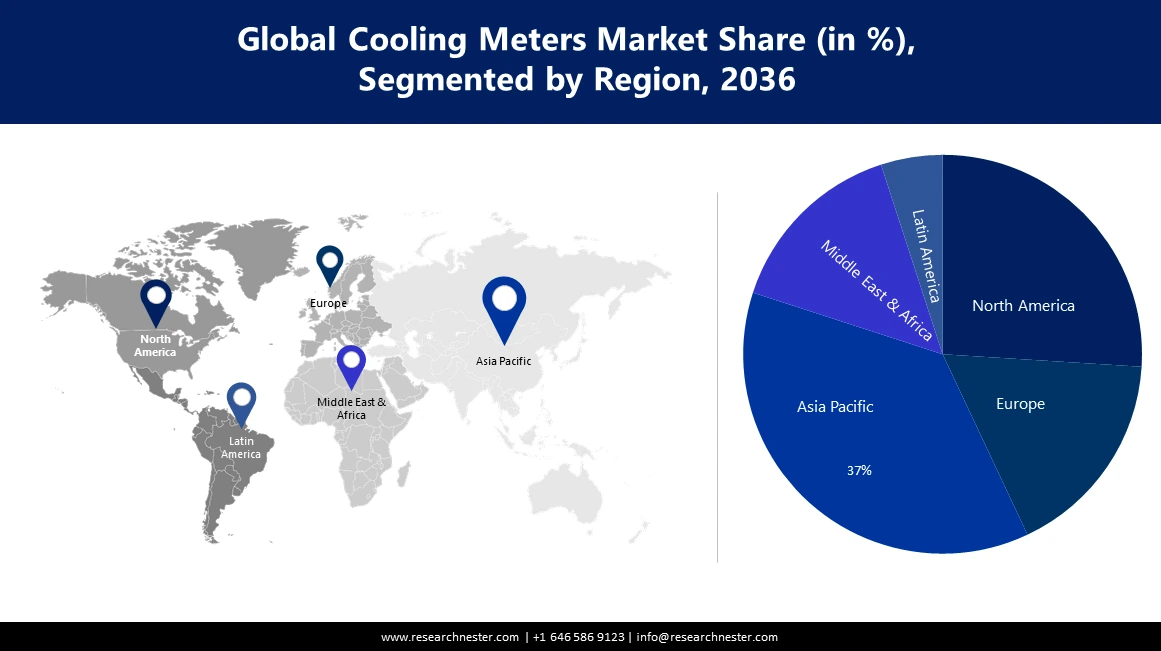

APAC Market Statistics
The Asia Pacific cooling meters market is expected to hold 37% of the revenue share by 2036. This growth will be mainly driven by the increasing demand for cooling technologies in this region. Looking at the 2021 international requirement in terms of Japan, China, and other regions, the largest requirement is from China, of which requirement is calculated to have touched 41,305 thousand units, showing 98% of its 2020 requirement. China's requirement is attributed to 38% of the world's total requirement. Next to China, the Asian region (excepting Japan and China) stands at 17,983 thousand units, trailed by North America having 16,515 thousand units, Japan having 10,201 thousand units, Europe having 8,885 thousand units and Latin America with 6,547 thousand units. In a warming world, prosperity and civilization depend more on access to cooling. The expanding demand for cooling will contribute substantially to climate change.
North American Market Analysis
The North America region will encounter huge growth in the cooling meters market and will hold the second position by the end of 2036. Moreover, this growth in the region will happen owing to the smart and innovative cooling technologies that they use for lesser energy consumption. Innovative technologies offer a decarbonized, digital, and more maintainable tomorrow—across industrial applications, buildings, infrastructure, and the complete food and cold chain. With a wide portfolio of products and solutions, these technologies assist in limiting international emissions and reducing climate change. The focus: is to keep global warming below 1.5°C degrees. Successful implementation of energy effectiveness programs in the region frequently install and produce a range of energy-proficient technologies.


Author Credits: Dhruv Bhatia
Copyright © 2024 Research Nester. All Rights Reserved

FREE Sample Copy includes market overview, growth trends, statistical charts & tables, forecast estimates, and much more.
Have questions before ordering this report?